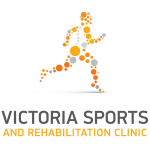Developmental hip dysplasia or DDH is a condition in babies which affects the hip joint. It occurs when during growth, the ball and socket joint develops an abnormality. The femoral head (the ball part at the top of our thigh bone) is not stable within the socket (the cup part which is made up of the pelvis). This can be caused by many factors including slower bone growth and the ligaments and joint capsule being too loose to hold it in properly.
Due to the laxity of the joint, the hips can make a clicking or snapping noise on movement. This is commonly noticed by parents during nappy changes and dressing and while the baby is quite young, however there are instances where it is missed and diagnosed at a later age.
Like any condition, early intervention can lead to a better outcome. And within Australia we are so lucky to have great screening methods and early intervention. Orthopedic tests are conducted by Maternal Child Health Nurses as well as other health professionals at regular intervals to screen for conditions like these. If dysplasia is suspected, the baby will be referred for an ultrasound or Xray (depending on the age) to determine if it is confirmed.
Imaging of the hip will determine the grading of the condition, which helps the pediatrician develop a treatment plan. If mild, treatment commonly consists of encouraging the M position of the hips (such as with double napping and certain baby carriers), to allow for optimal growth, as well as manual therapy such as osteopathic treatment. In more serious cases, bracing (such as the Pavlik harness or Denis Browne brace) or casting until the malformation improves. In extreme cases surgery can be an option however it is very rare.
Hip dysplasia has a very good recovery rate within Australia and studies have shown that these children develop normal, healthy hips with little long term issues.
If you have concerns about your little one please speak to your Osteo, MCHN or GP today!
